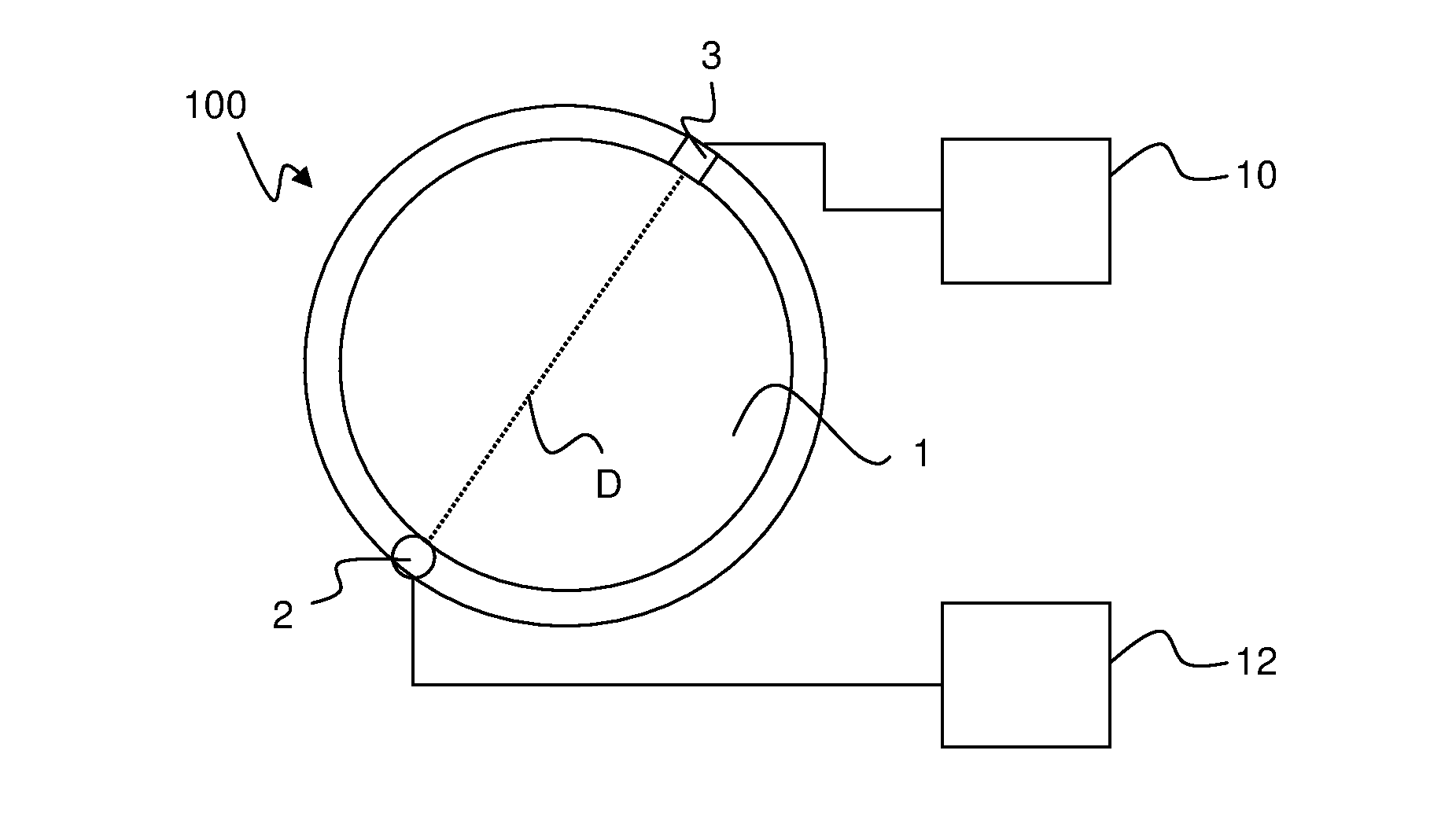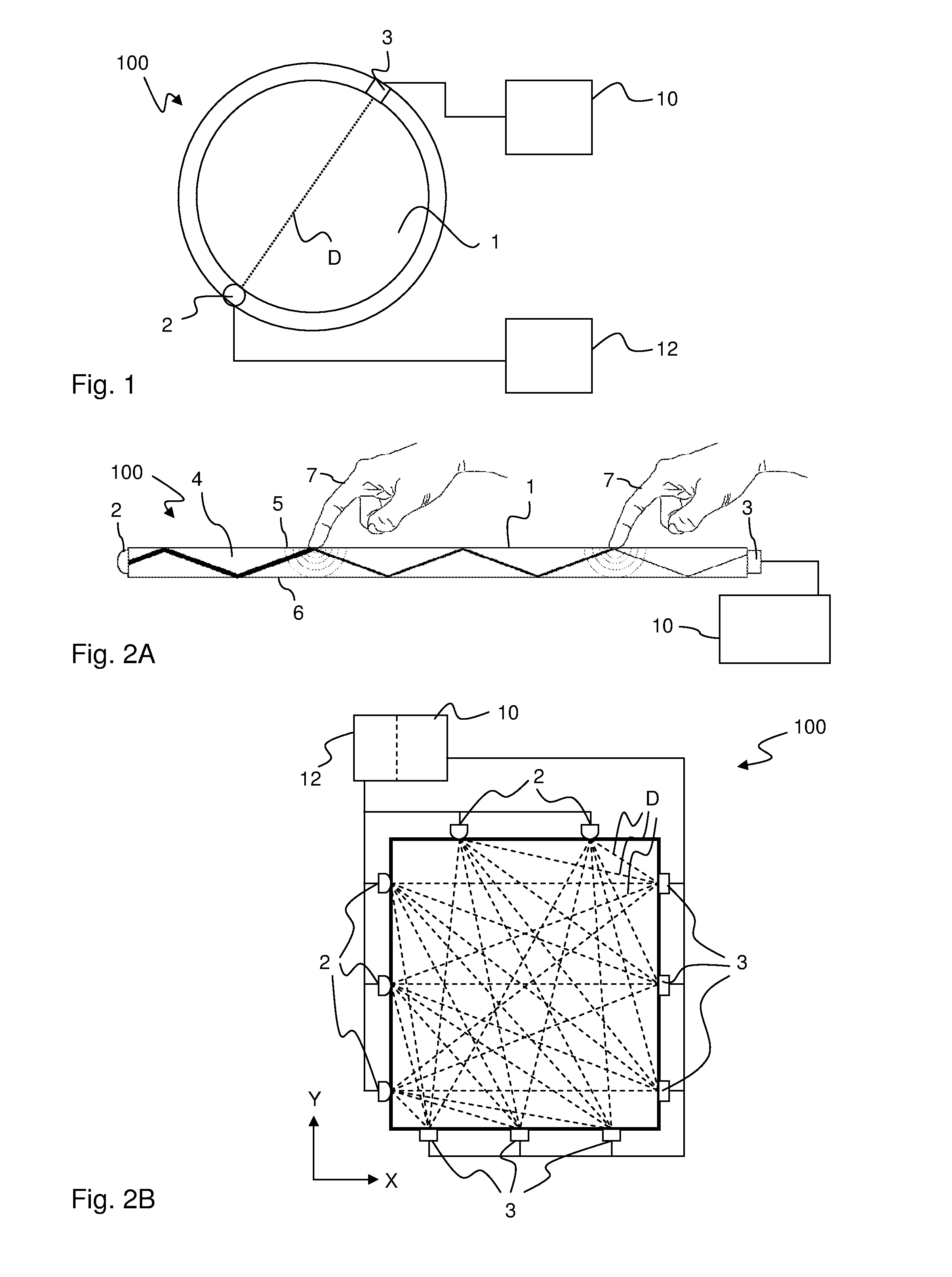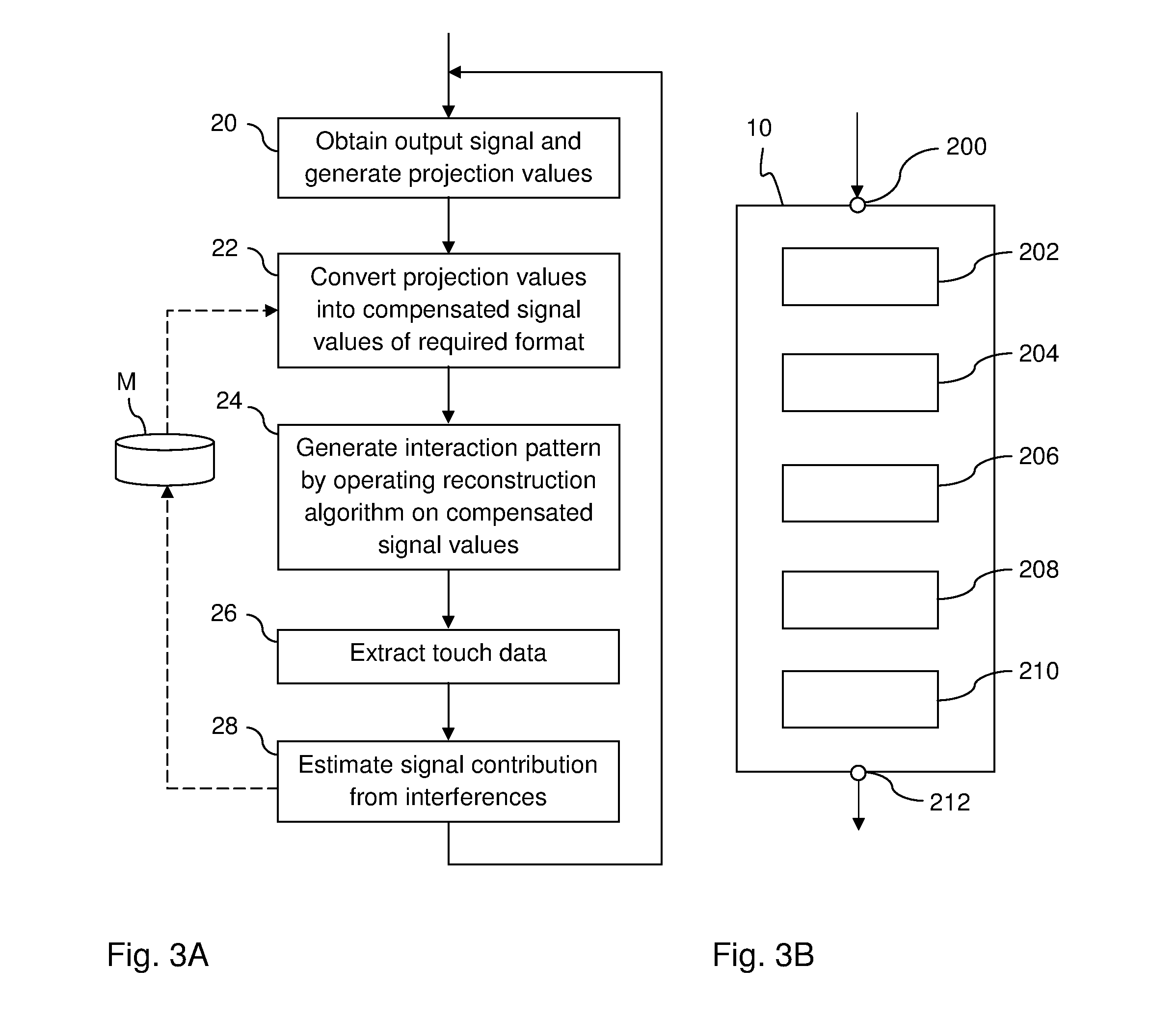Touch determination with signal compensation
- Summary
- Abstract
- Description
- Claims
- Application Information
AI Technical Summary
Benefits of technology
Problems solved by technology
Method used
Image
Examples
Embodiment Construction
[0052]The present invention relates to techniques for enabling extraction of touch data for multiple objects in contact with a touch surface of a touch-sensitive apparatus. The description starts out by presenting the underlying concept of such a touch-sensitive apparatus, especially an apparatus operating by frustrated total internal reflection (FTIR) of light. The description continues to present embodiments for suppressing the influence of signal interferences in a touch determination process. Finally, detailed examples are given.
[0053]Throughout the description, the same reference numerals are used to identify corresponding elements.
1. Touch-Sensitive Apparatus
[0054]FIG. 1 illustrates a touch-sensitive apparatus 100 which is based on the concept of transmitting energy of some form across a touch surface 1, such that an object that is brought into close vicinity of, or in contact with, the touch surface 1 causes a local decrease in the transmitted energy. The touch-sensitive appa...
PUM
 Login to View More
Login to View More Abstract
Description
Claims
Application Information
 Login to View More
Login to View More - R&D
- Intellectual Property
- Life Sciences
- Materials
- Tech Scout
- Unparalleled Data Quality
- Higher Quality Content
- 60% Fewer Hallucinations
Browse by: Latest US Patents, China's latest patents, Technical Efficacy Thesaurus, Application Domain, Technology Topic, Popular Technical Reports.
© 2025 PatSnap. All rights reserved.Legal|Privacy policy|Modern Slavery Act Transparency Statement|Sitemap|About US| Contact US: help@patsnap.com



